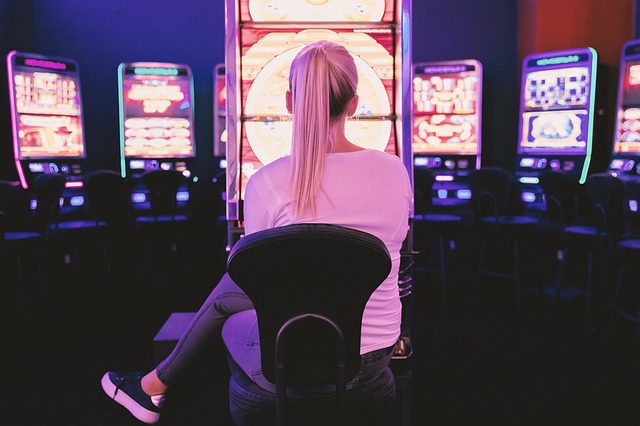Slot machines in the gaming industry are constantly surrounded by myths and stories, and the flashing lights of casinos conceal a great deal of information. Players with a great deal of experience talk about slots that are “hot” and “cold” as if they were fantastical creatures with their own distinct personalities.
However, what exactly do these terms signify, and is it even possible to identify a slot machine that is just not going to pay out at this time? Understanding the psychology of slot machines can be the key to maintaining your valuable bankroll and transforming the game from a bankrupting financial disaster into a regulated form of entertainment, regardless of the level of expertise you have with slot machines.
What is a ‘cold’ slot machine?
The term “cold” slot machine refers to gaming equipment that either has a low payout frequency over an extended period of time or doesn’t pay out any big rewards at all. Slot machines like these appear to be “frozen,” as they absorb players’ wagers without offering meaningful compensation. On the other hand, there are machines considered to be “hot,” rewarding players with substantial payouts over time. If you’re exploring new games and want to test your luck without spending your own money, it’s worth trying platforms that offer promotions like the Hidden jack no deposit bonus, giving you a chance to play without risk while identifying which machines might be running hot.
The fact that players frequently look for patterns in situations where there are none is something that should be taken into consideration, despite the fact that traditional casino slot machines are based on random number generators (RNGs). Cognitive bias is the term used by psychologists to describe the tendency of the human brain to search for patterns and connections even in situations that appear to be completely random.
LOCAL NEWS: 100 best places to work and live in Arizona for 2025
Signs and strategies for identifying ‘cold’ slot machines
Several indicators may suggest that a slot machine has a higher potential to produce losses. However, it’s important to remember that these signs are based on statistical patterns rather than certainties:
- A prolonged lack of any wins over 20 to 30 consecutive spins
- Frequent minimum payouts that don’t cover the cost of the bets
- Long gaps between the activation of bonus rounds
- A noticeable drop in the frequency of Wild and Scatter symbols compared to typical gameplay
- A significant decrease in the machine’s Return to Player (RTP) performance
To manage your finances effectively, it’s crucial to set clear loss limits and stick to them, regardless of the situation. Experts recommend tracking the amount of time spent on a single machine and switching to another if the current one fails to provide enjoyment or a reasonable return within a set timeframe.
Ultimately, there’s no such thing as a “hot” or “cold” slot machine in a mechanical sense. Modern slot machines use algorithms that ensure each spin is independent of the previous ones. Therefore, the odds of winning on a so-called “cold” machine are exactly the same as on any other.
A sensible approach to gambling is always the best strategy. Treat slots as a form of entertainment, not a way to earn money. Set limits on how much time and money you spend, choose machines with high RTP percentages, and remember that the house always has the mathematical edge in the long run.
Understanding the random number generator
It is important to understand how slots work before drawing conclusions about their ‘hotness’ or ‘coldness’. Modern slots operate on the basis of random number generators (RNGs), which ensure a completely random result for each spin. This means that no matter when you play, the odds of winning always remain the same. Therefore, the concept of ‘hot’ and ‘cold’ machines is unfounded.
Myths about ‘hot’ and “cold” slots
Many players believe in these myths, hoping that by choosing a ‘hot’ machine, they will increase their chances of winning. However, since slots are games of chance, the probability of winning is determined not only by the frequency of wins, but also by the game itself. Previous wins or losses do not affect the results of the spin, as each round is an independent event.
In the world of gambling, the terms ‘hot’ and ‘cold’ slots remain a myth. Slots work on the basis of random number generators, which ensures the fairness and randomness of each spin. If you are a player, it is best to just enjoy the game without succumbing to myths about ‘hot’ and ‘cold’ machines. Remember to gamble responsibly and choose slots that you enjoy!
Which slot machines give you a chance to win
Any casino account holder who chooses slot machines for entertainment often has two goals: to have fun and to win money.
The second goal is much more important for many players. That is why gambling professionals look for slots that can pay out the most money or have a high return percentage.
Let’s talk about the RTP of slot machines
The return rate of a particular slot machine is of primary interest to casino customers. To find out which machines pay out the most money, just look at the RTP percentage. The theoretical return percentage or return to player is an official term and is specified for all slots.
The formula for calculating this indicator is very simple: winnings/bet amount * 100%. The average percentage for a standard gaming machine worldwide is 96. The rules for providing betting software clearly state the RTP, otherwise it is a violation of the law. Slot machines are regularly tested for payout percentage.
It is important to understand how this system works. Let’s say the indicator for an online machine is 96%. This does not mean that out of 100 hryvnia spent, you will definitely get 96 back. The standard distance for spinning the reels is 1000 times. The return indicator is calculated after millions of spins. With this calculation, it would be incorrect to play slot machines for money online. The bet should not fluctuate. It should be the same for all spins.
What does knowing which slot machines pay out give you?
This information primarily indicates how many bets can be played over a long period of time. The value is also related to dispersion, which is especially noticeable in a real casino. For a slot with a return percentage of 99%, there is a very high chance of frequent but small wins. If you are playing a slot with a return percentage of 90%, the machine will give out rare but large wins or jackpots.
Cold and hot
We’re not talking about pies here. Slots in online casinos can also be cold and hot. This indicator hardly affects the RTP, but it is important. Understand that a game cannot constantly give out large winnings. It needs to cool down. Experienced users understand what we mean. For example, after winning the jackpot, the game will pause and you can hardly expect big wins.
In more detail, it looks like this. During the bets of many players, the total pool of the game accumulates and sooner or later gives out a big win. The fresher the win, the colder the slot is considered to be. Conversely, the longer there is no win, the hotter it becomes, and at some point it starts to give back what it has accumulated. The game starts to distribute the accumulated pool very often. This moment is considered the most profitable for placing bets.
Recently, entire websites have appeared that perform such analysis. Their employees constantly spin slots at different rates and report on the results. By tracking this data, you can determine where the return is currently high and where there is none at all.
Let’s sum up
How to choose the right slot machine based on the return percentage? If you are looking for a slot with low variance, it means that you intend to make small bets and win small amounts frequently. This option is suitable for novice players who want to test the casino or just have a good time for little money.
If you want to hit the jackpot and intend to play big, choose slot machines with an RTP of no more than 92%. You will win much less often, but you will have a chance to collect good winning combinations.
And don’t forget to check the slot’s conditional temperature – is it hot or cold?




